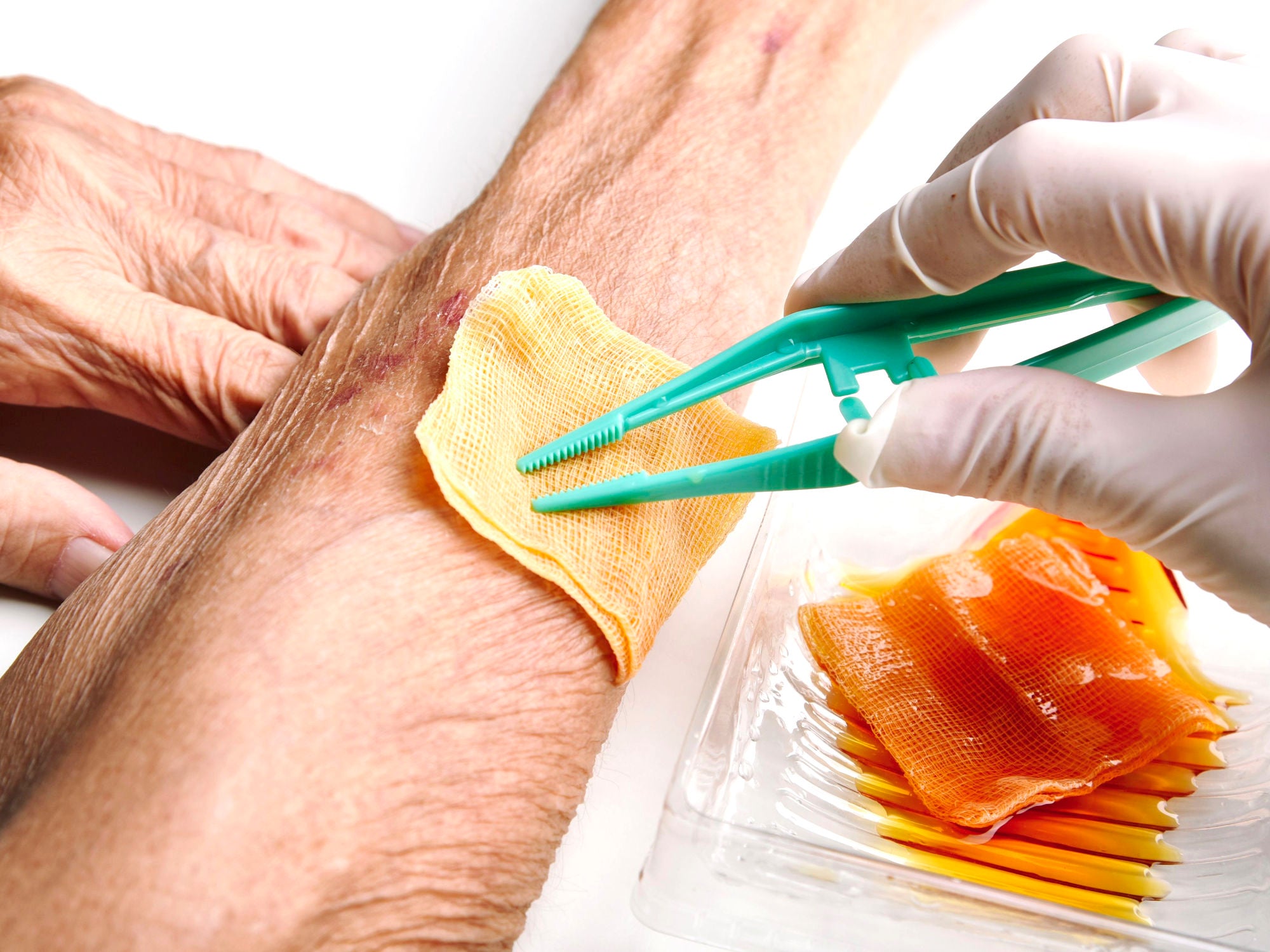
How to Apply Manuka Honey to Wounds
It is possible to apply the Manuka Honey on Wounds as a natural device, since it helps disinfect the skin and makes painless dressing changes possible.
For many years Manuka Honey has been at the centre of very important studies by some researchers at the Dresden University of Technology.
This team of food chemists were able to identify in the Methylglyoxal the active ingredient that differentiates Manuka honey from all other honeys.
Methylglyoxal
The Methylglyoxal Today gives a name to what, until recently, was called UMF (Unique Manuka Factor).
Discovered and identified by a team of chemists led by Thomas Henle , Methylglyoxal is a product of the breakdown of sugars.
To this day it is still the subject of numerous studies and it is not yet clear what factors induce the manuka plant to produce this substance.
But today it is possible to determine the exact percentage in a given quantity of honey, and this differentiates the honey into various gradations.
Why is Manuka honey so special?
Manuka honey is especially important for its antibacterial and antimicrobial action.
Would he be able to support the immune system and help prevent and fight many small ailments such as colds, coughs... and it can also be used locally on the skin in case of dermatitis, styes in case of small burns and wounds.
It promotes the regeneration of the fabrics and helps healing by giving a soothing action .
But now let's see in detail how to use Manuka Honey on wounds.
Manuka Honey on Wounds
There are many ways to cause an injury and the causes can be different.
Manuka honey represents a natural alternative to classic dressings.
However, it is a natural remedy, it should not replace medical therapies and, in case of deep wounds, it is always necessary. consult a doctor.
In the case of small wounds or abrasions, a Manuka honey MG100+ , its local application will prevent the wound from becoming infected and will allow for faster healing.
How to apply Manuka Honey on wounds?
Before applying Manuka honey it is necessary remove impurities with suitable products.
The dressing itself has a cleansing effect, in fact, the same Manuka honey bandage will be able to remove impurities once removed.
Honey should be applied locally to the wound with the help of a spatula.
If this is too painful, you can prepare a bandage already brushed with Manuka honey and apply it on the affected area.
It is better if it is spread also beyond the edges of the wound, so that the Manuka honey can "nourish" the healthy cells and therefore make regenerate the margins until it is sealed with healthy and functional tissues.
It is always advisable to apply a bandage, after an initial burning sensation you will immediately feel its effect. soothing and calming effect.
Furthermore, thanks to honey it will be possible change dressings very easily and painlessly.
How Much Manuka Honey Should You Use?
There is no right amount to apply, the Manuka honey must cover the entire surface of the wound.
In case of jagged wounds, all the depressions and cavities must be filled, so that its active ingredient reaches and eliminates all the pathogens.
Why use a bandage? Isn't it better to leave the wound exposed?
Create a humid environment It is essential in case of deep wounds because otherwise promotes healing only superficial, preventing deep healing.
The methylglyoxal, which is the active ingredient in Manuka honey and responsible for its extraordinary antimicrobial effect, It does not need oxygen to act.
It is also effective when thick bandages are required.
After the first bandage of honey and gauze, it will be useful to apply a further bandage of a waterproof fabric (transparent film) to protect clothing and prevent honey from being removed from the wound.
Can you warm Manuka Honey to make it easier to apply?
Manuka honey can be subjected to heat without suffering a significant loss of effectiveness.
It is advisable to soften it with heat until it reaches body temperature.
It is important to know that the antimicrobial effect of this honey works both in the absence of dilution and in highly diluted concentrations such as in case of wounds that ooze a lot.
For further information, we leave you some scientific sources on this topic:
Recommended products
-
Quick shop for Manuka Honey
Liquid error (snippets/product-card line 378): product form must be given a product













0 comments